 Image 1 of 11
Image 1 of 11

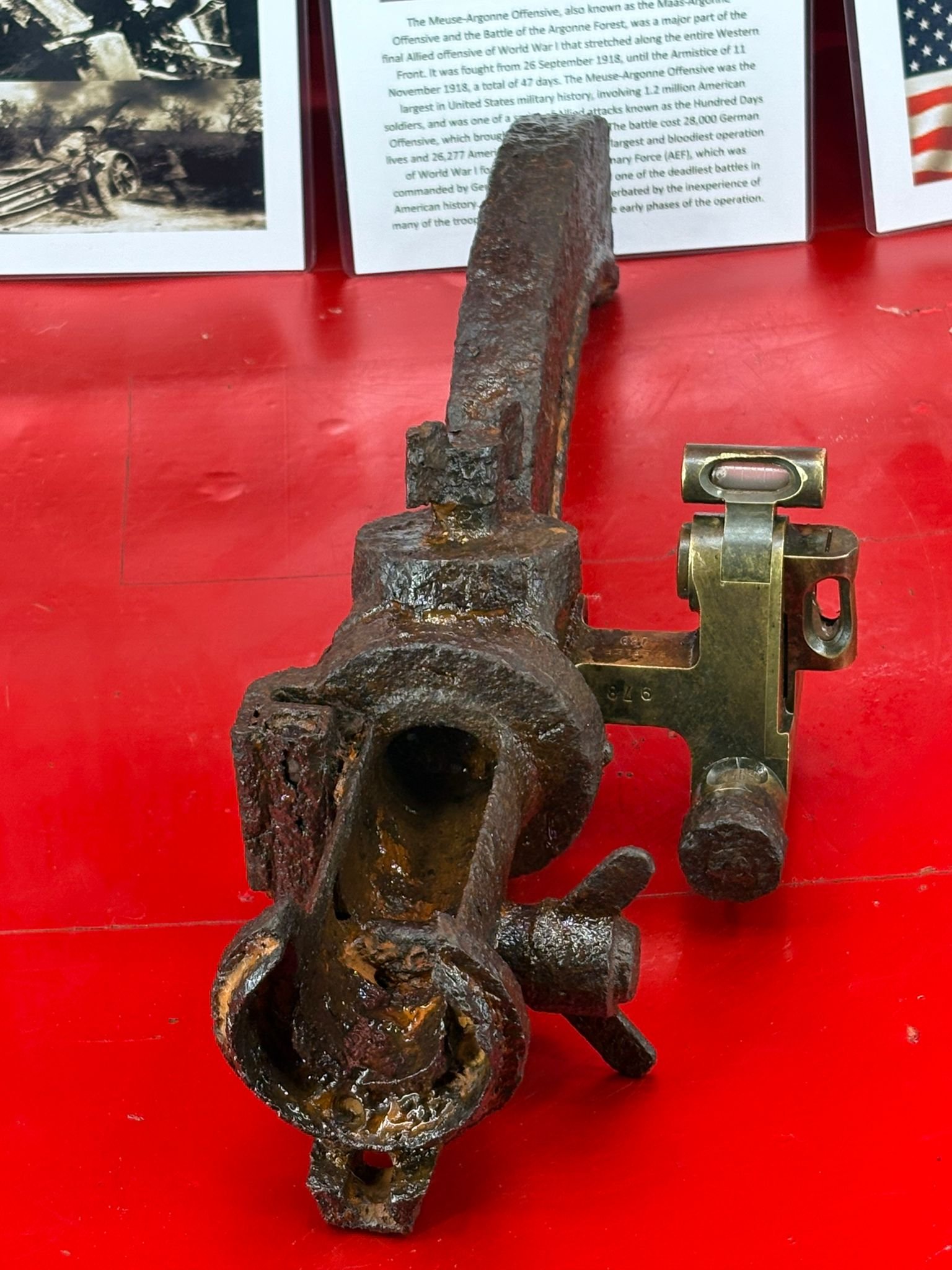 Image 2 of 11
Image 2 of 11

 Image 3 of 11
Image 3 of 11

 Image 4 of 11
Image 4 of 11

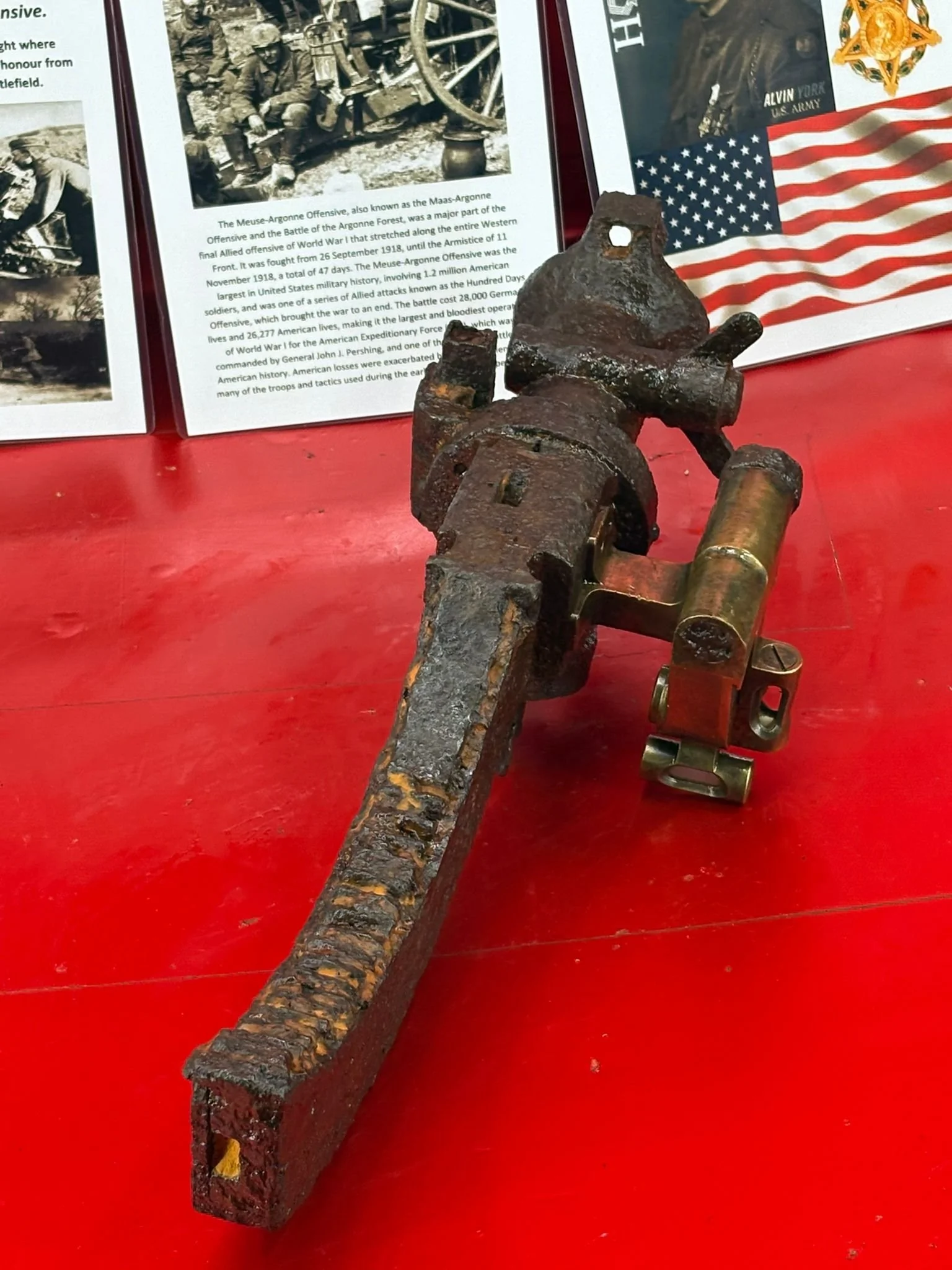 Image 5 of 11
Image 5 of 11

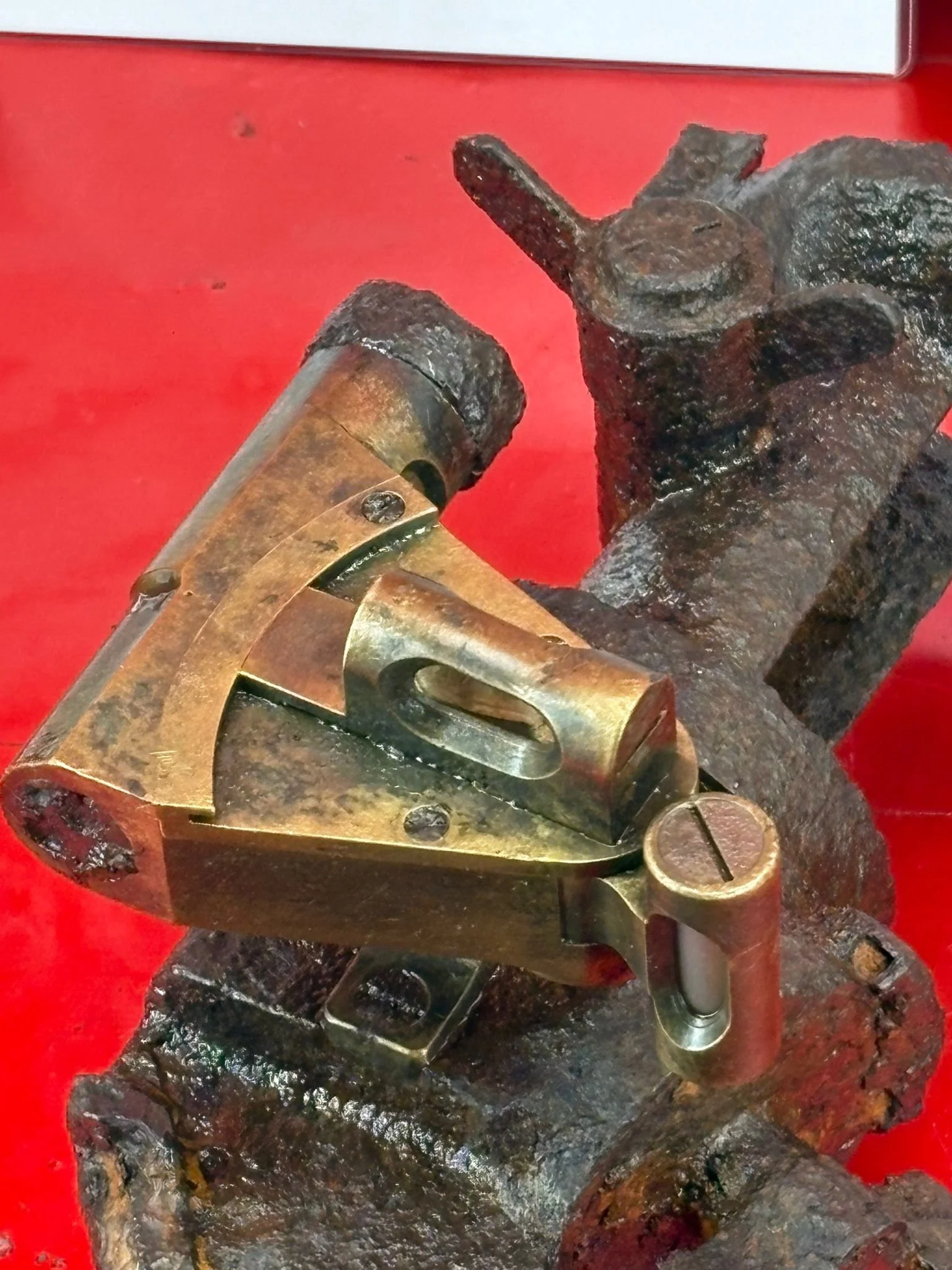 Image 6 of 11
Image 6 of 11

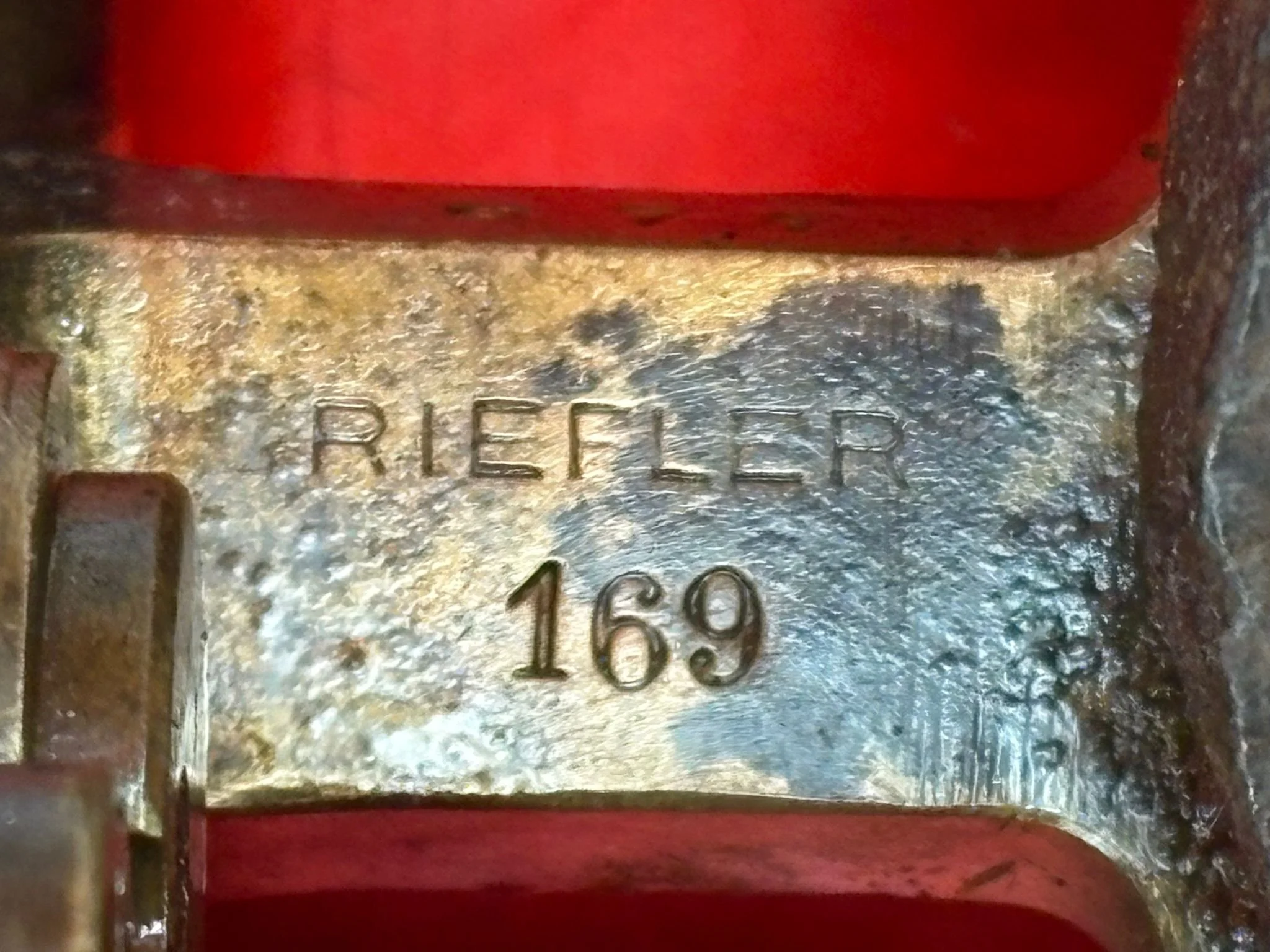 Image 7 of 11
Image 7 of 11

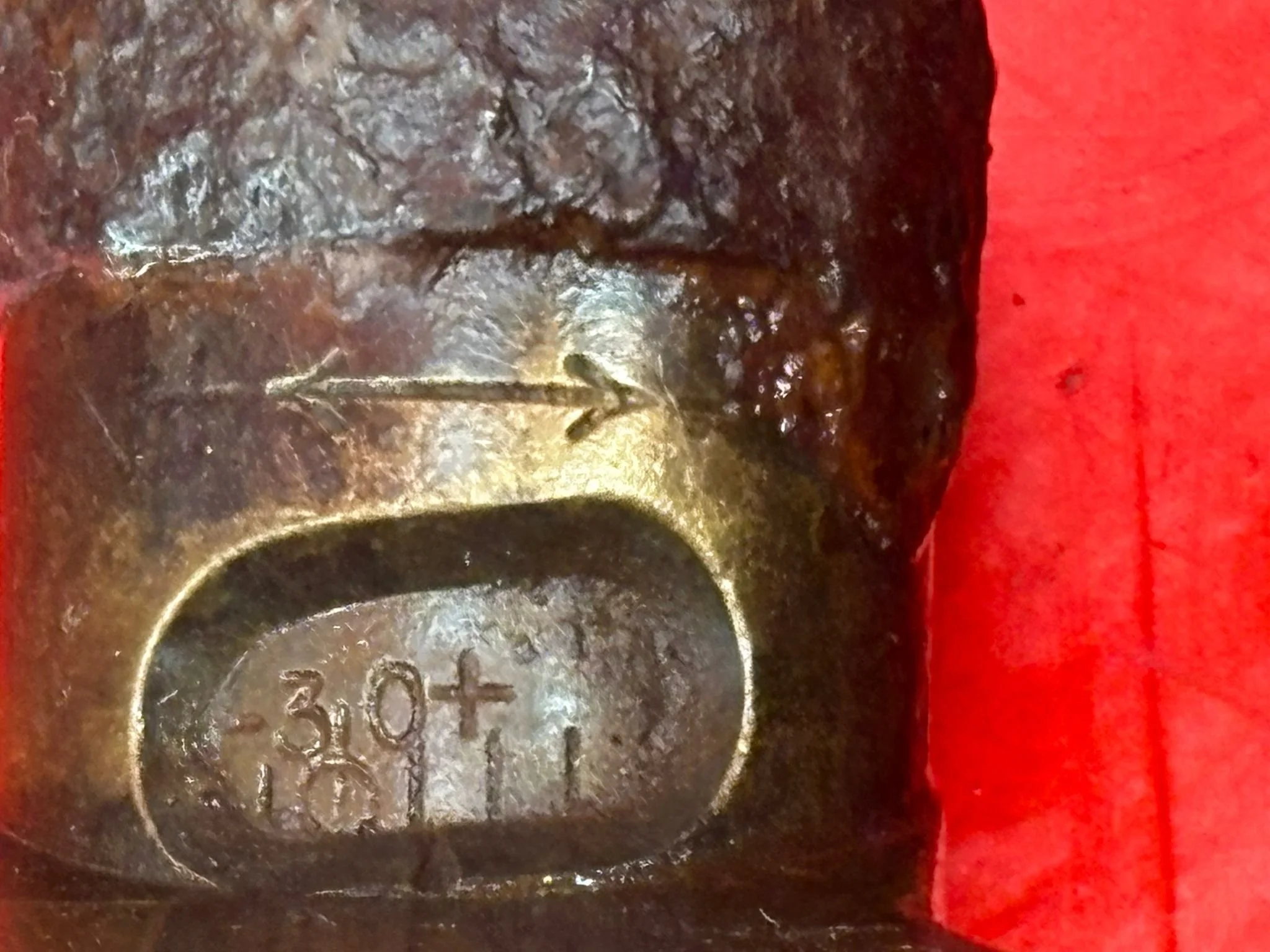 Image 8 of 11
Image 8 of 11

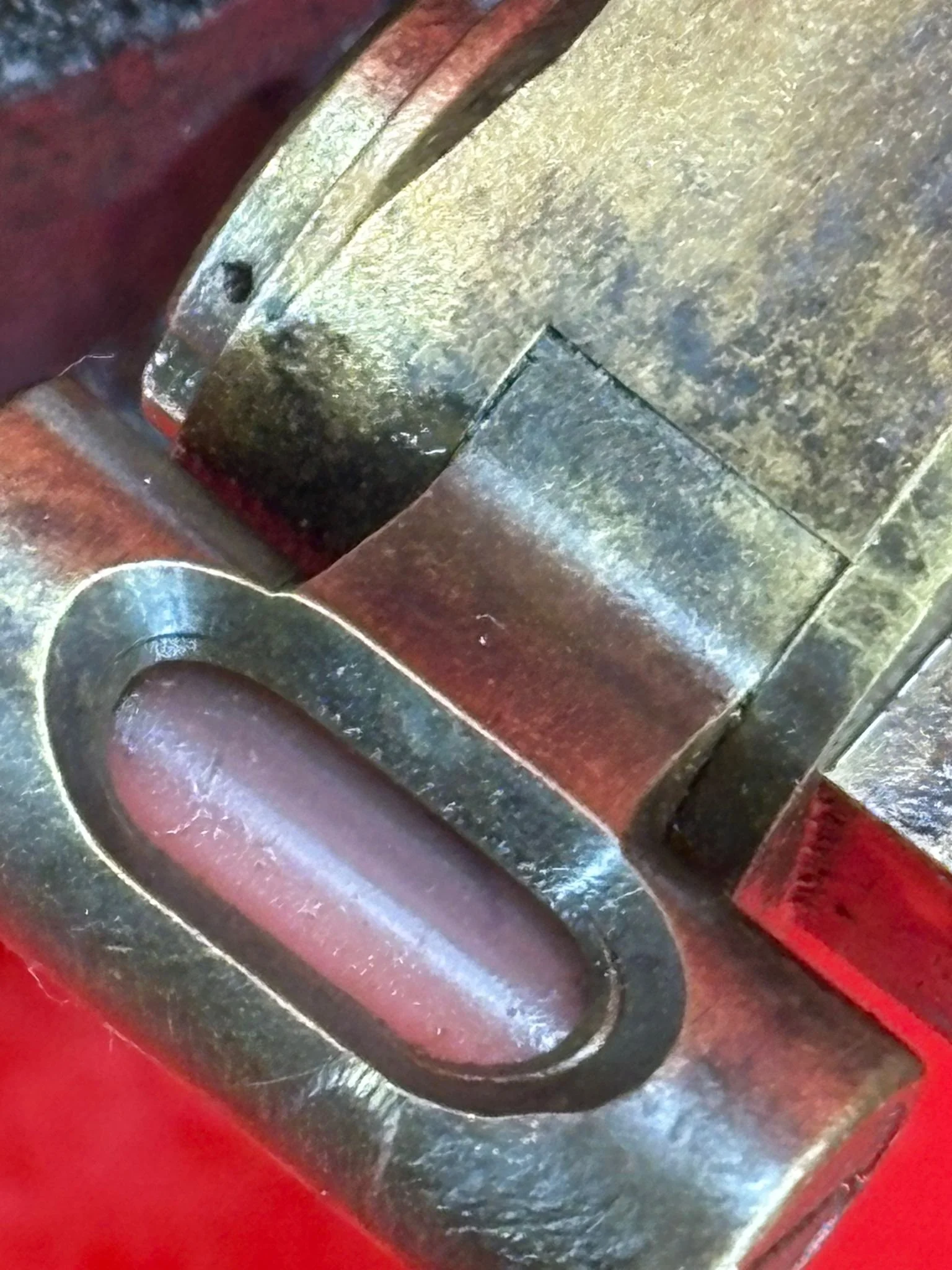 Image 9 of 11
Image 9 of 11

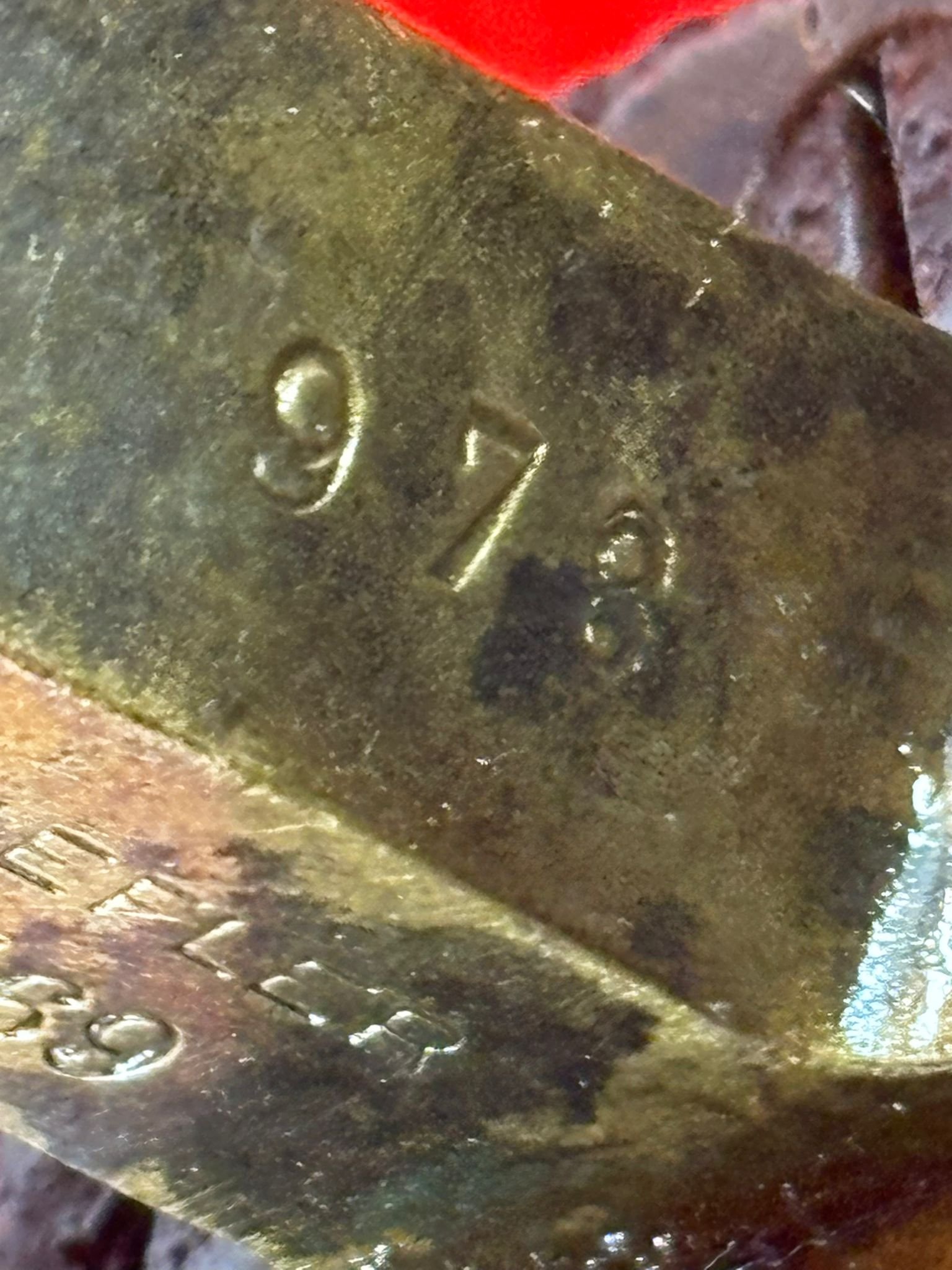 Image 10 of 11
Image 10 of 11

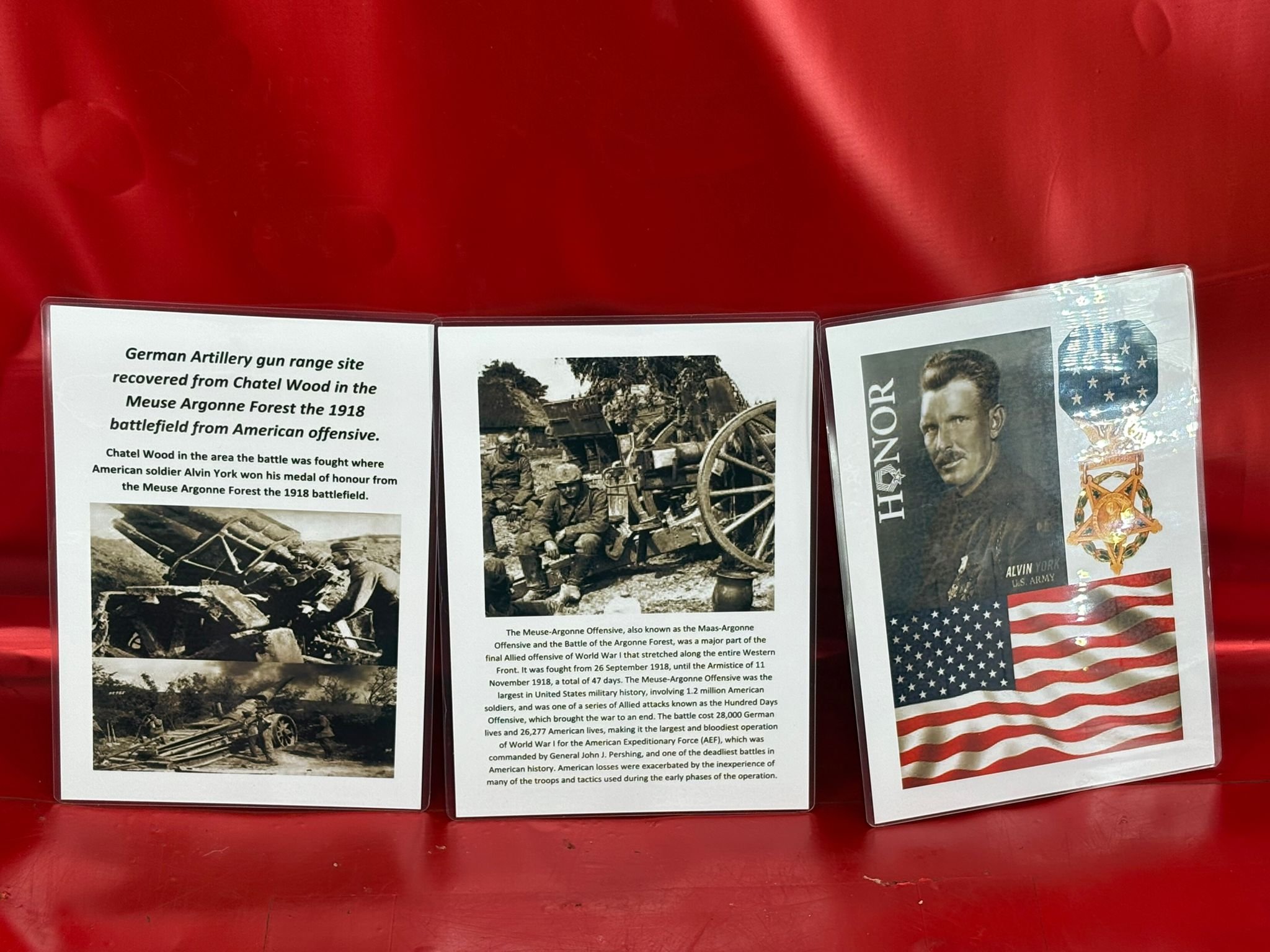 Image 11 of 11
Image 11 of 11












Rare German Artillery gun range site,lovely condition with maker markings that was recovered from Chatel Wood in the Meuse-Argonne Forest 1918 American battlefield
This is a rare battlefield find a German Artillery gun range site which is not complete but with maker markings still visible on the brass fitting. It is a large heavy part which was used by a gun around the size of a 77mm field artillery gun. The brass optics part has its lovely original colour even with one of the glass sights still in place the rest of this heavy artillery gun part is rusty but solid with no real paintwork left on it.This is a rare one for any collection perfect condition for display and it is 15 inches long in length, it is in excellent condition for a relic and comes with 3x A5 laminated information cards with pictures.
This artillery gun was recovered from Chatel Wood, located within the Meuse-Argonne Forest, the site of fierce American fighting in 1918. The area witnessed heavy casualties as U.S. forces pushed back well-entrenched German positions in one of the most significant battles of the First World War.
Chatel Wood in the area the battle was fought where American soldier Alvin York won his medal of honour from the Meuse Argonne Forest the 1918 battlefield.
Historical Background The Meuse-Argonne Offensive:
Also known as the Battle of the Argonne Forest, the Meuse-Argonne Offensive was a key part of the final Allied push on the Western Front. Fought between 26 September and 11 November 1918, it lasted 47 days and was the largest American military operation of World War I, involving 1.2 million U.S. troops.
This offensive formed part of the broader Hundred Days Offensive, which ultimately led to the end of the war. Commanded by General John J. Pershing, the American Expeditionary Force (AEF) played a central role in the campaign. The battle was one of the deadliest in American history, with 26,277 American and 28,000 German soldiers killed. Heavy U.S. losses were partly due to the inexperience of American troops and outdated tactics used in the early phases of the assault. This tin lid is a rare and powerful relic from this iconic and decisive chapter in World War I history
This is a rare battlefield find a German Artillery gun range site which is not complete but with maker markings still visible on the brass fitting. It is a large heavy part which was used by a gun around the size of a 77mm field artillery gun. The brass optics part has its lovely original colour even with one of the glass sights still in place the rest of this heavy artillery gun part is rusty but solid with no real paintwork left on it.This is a rare one for any collection perfect condition for display and it is 15 inches long in length, it is in excellent condition for a relic and comes with 3x A5 laminated information cards with pictures.
This artillery gun was recovered from Chatel Wood, located within the Meuse-Argonne Forest, the site of fierce American fighting in 1918. The area witnessed heavy casualties as U.S. forces pushed back well-entrenched German positions in one of the most significant battles of the First World War.
Chatel Wood in the area the battle was fought where American soldier Alvin York won his medal of honour from the Meuse Argonne Forest the 1918 battlefield.
Historical Background The Meuse-Argonne Offensive:
Also known as the Battle of the Argonne Forest, the Meuse-Argonne Offensive was a key part of the final Allied push on the Western Front. Fought between 26 September and 11 November 1918, it lasted 47 days and was the largest American military operation of World War I, involving 1.2 million U.S. troops.
This offensive formed part of the broader Hundred Days Offensive, which ultimately led to the end of the war. Commanded by General John J. Pershing, the American Expeditionary Force (AEF) played a central role in the campaign. The battle was one of the deadliest in American history, with 26,277 American and 28,000 German soldiers killed. Heavy U.S. losses were partly due to the inexperience of American troops and outdated tactics used in the early phases of the assault. This tin lid is a rare and powerful relic from this iconic and decisive chapter in World War I history
